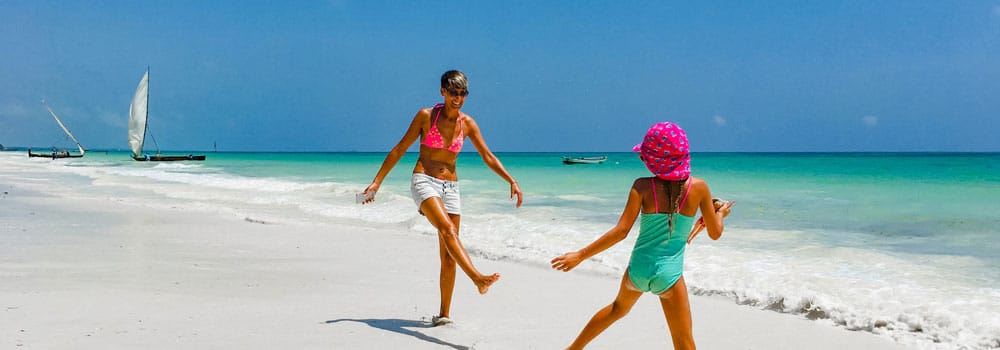The Zanzibar archipelago sits just off the east coast of Tanzania surrounded by the Indian Ocean.

The tourist-light version of this collection of coral atolls and islands is defined by white beaches, lush rainforests, luxury hotels and world-class diving. Nothing if not complex, Zanzibar’s also a dense mix of cultures, deeply held beliefs, dark history, ancient customs, spirituality and ritual. It’s a popular beachy break at the end of Serengeti safaris and several exquisite resorts are designed to utterly cocoon visitors. But if you’re travelling with more on your mind than sun, sand and sea, you’ll be warmly welcomed by Zanzibari people and unfailingly inspired by their resilience, humour and astonishing resourcefulness.
Flights from the UK to Zanzibar via Nairobi take just over 11 hours. Direct daily flights from Arusha City (hub of Tanzania’s game reserves) to Zanzibar take one hour.
Stone Town, the historic heart of Zanzibar Town, is a UNESCO World Heritage site.
Zanzibar’s the only place in the world where rare Colobus Monkeys are native and can be seen in their natural rainforest habitat. Coral reef diving and snorkelling off the coast of Zanzibar is the finest in East Africa with vast shoals of tropical fish and visibility up to 30 metres.
Known for centuries as the Spice Islands, the Zanzibar archipelago is still one of the main producers of cloves – Pemba Island has over 3 million clove trees.
Traditional Swahili culture is richer and more vibrant in Zanzibar than almost anywhere else on the East African coast.
Tourism’s vital to the economy in Zanzibar and there’s no shortage of stunning resorts for wonderful family beach holidays. Many are owned by international luxury brands but do a bit of research into their ethics. It’s not too difficult to make sure that at least some of your spend goes directly to local communities and your stay is as low impact as possible in terms of natural resources.
June to October is the best time to visit Zanzibar, the weather’s dry and temperatures are not much higher than 26˚. The island roads are surprisingly good and hiring a car, even for a few days, is the best way to explore. If you don’t want to self-drive, many car rental companies offer inexpensive car and driver packages charged at daily rates. Walking is the only way to get about Stone Town. Cycling’s safe and easy in quieter coastal areas and on Pemba Island – bike hire’s available in Zanzibar Town and most resorts have bikes for guest use.